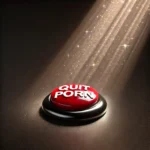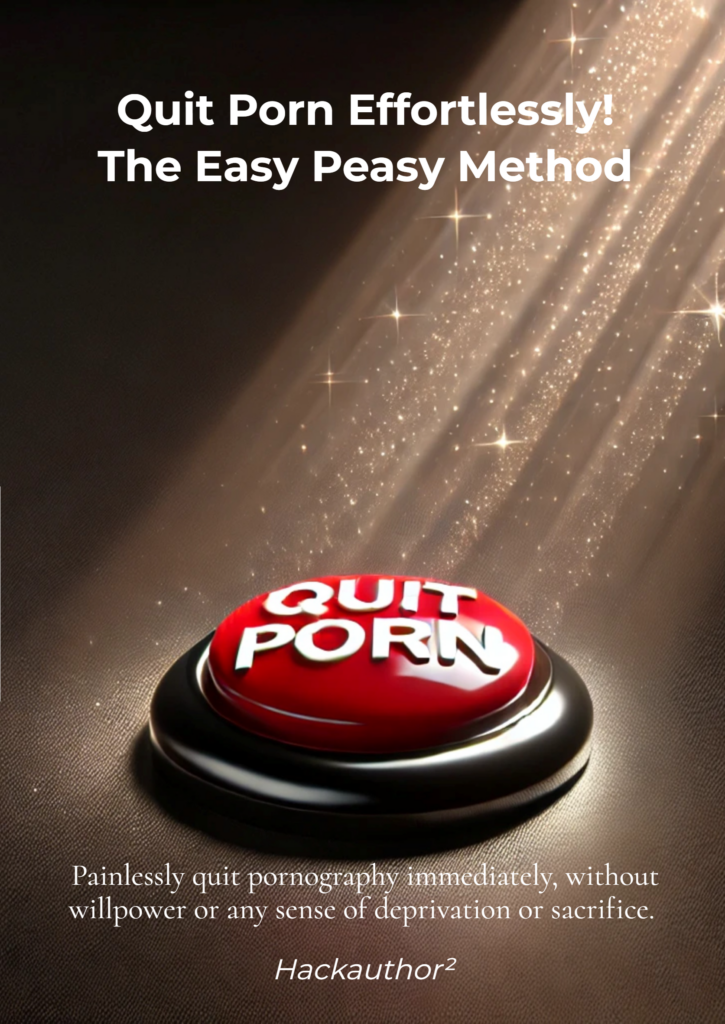Picture this: addiction as a chain reaction, an unbroken cycle that ties one session to the next. Each time you indulge, you add another link to the chain. The habit becomes stronger, more automatic, and harder to escape. It’s a perfect storm: physical cravings, psychological dependency, and the brain’s hardwiring work together to keep you locked in. This is the “Chain for Life,” and until you deliberately step in to break it, it continues indefinitely.
The cycle starts in the brain. Every time you watch porn, your brain gets a dopamine hit—a surge of the neurotransmitter responsible for pleasure and reward. Dopamine makes you feel good, but here’s the catch: it’s not just about the feeling. Dopamine also reinforces behaviors, signaling to your brain, Hey, do that again! Over time, this reinforcement creates deeply ingrained pathways—what the Easy Peasy method calls “neural slides.” Think of these slides as well-worn grooves in your brain. The more you engage in the addictive behavior, the smoother and faster those slides become, making it incredibly easy to slip back into the habit.
Learn how porn addiction traps your brain in a cycle of cravings. Break free, heal, and rediscover real joy and connection with proven strategies.
Hackauthor
This is why addiction can feel automatic, like it’s happening to you rather than something you’re actively choosing. The brain learns to associate certain triggers—stress, boredom, loneliness—with the dopamine rush of porn. Eventually, it doesn’t take much to send you hurtling down the neural slide. These pathways become so efficient that even the faintest nudge—a stressful day, a fleeting thought—can lead to a session.
And then there’s the role of cravings. When you stop the addictive behavior, dopamine levels drop sharply. This drop creates discomfort—feelings like restlessness, anxiety, or dissatisfaction—that your brain interprets as a problem that needs solving. Cravings are your brain’s way of pushing you back toward the behavior that temporarily relieved the discomfort in the past. But here’s the tricky part: the discomfort you’re feeling wasn’t there before the addiction. It’s a side effect of the addiction itself.
It’s a bit of a cruel joke, isn’t it? The very thing you turn to for relief is what’s creating the need for relief in the first place. Each session becomes a temporary escape from the withdrawal symptoms caused by the last session. This is the self-perpetuating cycle of addiction.
Over time, this cycle creates not just dependency but escalation. Just as drug users often need higher doses to achieve the same high, porn users may find themselves seeking more extreme or novel content. The brain’s dopamine receptors become less sensitive, meaning that what once excited you no longer does the trick. This is how people can end up watching content that doesn’t align with their values or even shocks them. It’s not about preference—it’s about the brain’s demand for a bigger dopamine hit.
This phenomenon ties into the idea of “supernormal stimuli.” Porn provides an exaggerated version of sexual stimulation that the brain was never designed to handle. It’s like comparing the sound of a live acoustic guitar to a stadium concert with amps turned up to eleven. The concert might be thrilling in the moment, but over time, your ears adapt, and you need louder and louder music to get the same thrill. Similarly, porn’s heightened stimulation overwhelms the brain’s natural reward system, making everyday pleasures—like genuine connection or simple joys—seem dull by comparison.
Understanding this cycle is the first step to breaking free. The Easy Peasy method emphasizes that the pleasure you think you’re getting from porn isn’t real. It’s an illusion created by the brainwashing of addiction. The dopamine rush feels good, sure, but it’s fleeting. The deeper truth is that porn doesn’t solve your problems; it creates them. The stress, boredom, or dissatisfaction you’re trying to escape are often amplified by the addiction itself.
Breaking the “Chain for Life” requires disrupting the cycle at its core. One way to do this is by challenging the belief that porn provides any real benefit. When you start to see it for what it truly is—a trap—you can begin to dismantle its hold on you.
Another crucial piece of the puzzle is addressing the neural slides. Remember, those pathways in your brain didn’t form overnight, and they won’t disappear overnight either. But here’s the good news: the brain is incredibly adaptable. Just as it can learn addiction, it can unlearn it. By choosing not to engage in the addictive behavior, you allow those pathways to weaken over time. It’s like letting a neglected trail in the woods grow over with grass and weeds.
Of course, this process isn’t always comfortable. When you stop using porn, you may go through a “reboot” period. This is similar to detoxing from drugs—it’s your brain recalibrating to function without the artificial dopamine boosts it’s grown used to. During this time, you might feel restless or irritable, but it’s important to remember that these feelings are temporary. They’re a sign that your brain is healing.
Patience is key here. It takes time for the brain’s dopamine receptors to regain sensitivity and for your natural reward system to start functioning normally again. But the rewards are worth it. As your brain heals, you’ll start to find joy in the simple, natural pleasures of life—things that addiction once dulled for you.
It’s also helpful to focus on building new, healthier habits. Addiction thrives in the absence of better alternatives, so give your brain something positive to latch onto. Whether it’s exercise, creative projects, or spending quality time with loved ones, these activities can help you form new neural pathways that lead to genuine fulfillment.
What’s so empowering about the Easy Peasy method is that it shifts the narrative around quitting. Instead of framing it as a sacrifice, it reframes it as a gain—a return to freedom. You’re not giving up anything of value; you’re letting go of something that’s been holding you back.
Think about it: what does life as a non-user look like? No more guilt, no more wasted time, no more internal battles. Imagine waking up with a clear mind, feeling fully present and engaged with the world around you. That’s the life waiting for you on the other side of the addiction.
And here’s the thing: breaking the chain isn’t just about quitting porn. It’s about reclaiming your autonomy, your joy, and your ability to choose how you want to live. It’s about stepping out of the shadow of addiction and into the light of genuine connection, purpose, and self-respect.
So, if you’re listening to this and feeling stuck, know that you’re not alone—and you’re not powerless. The cycle might feel unbreakable, but it’s not. It’s a chain you can shatter with understanding, determination, and the right tools.
Thank you for joining me on this journey through the “Chain for Life” and the addictive cycle. I hope this conversation has given you some clarity and encouragement. If you found it helpful, share it with someone who might need it. Remember, freedom is closer than you think. Until next time, take care, stay hopeful, and keep moving forward toward the life you deserve.

